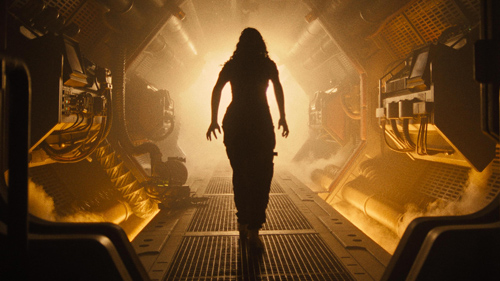
Almost 50 years removed from Ridley Scott’s Alien, H.R. Giger and Dan O’Bannon’s multimouthed space monster remains timeless. That’s not to say almost every sequel, prequel and whatever Alien vs. Predator is didn’t at least slightly chip away at the Xenomorph’s mystique. But those films didn’t completely diffuse what makes them iconic and terrifying, either. With Fede Alvarez (Don’t Breathe) in the pilot’s seat of Alien: Romulus, however, it’s not a stretch to think this entry marks a true return to form for the “perfect organism.” So, is it?
Absolutely not. Not for a lack of trying, but more so for a lack of identity. Of course, it’s unfair to expect any Alien entry to ignite the same feelings of curiosity and terror as the first. The moment we saw, we were desensitized. That’s the tragic downside of iconic franchises: If your take is too similar, it’s derivative. And if it’s too different, it’ll be tonally alienating. Romulus, surprisingly, manages to do both.
Set some 20 years after the original, Alien: Romulus follows Rain (Cailee Spaeny, Civil War) and Andy (David Jonsson, HBO’s Industry), a miner and her adoptive robo-brother. Desperate to escape their colony’s harsh way of life, Rain humors her ex’s pleas to join him on a short flight to a nearby planet, where the titular space station promises a heaping helping of long-lasting cryo-sleep chambers. (It’s a little muddy in the first act, but these pods will ensure Rain and company can survive a multiyear flight to a more ideal colony.)

Still, they also need Andy, whose similarities to Weyland-Yutani droids should let him interface with the Romulus’ tech. Spoiler: It works a little too well, as Andy doesn’t just open doors, but accidentally awakens a hoard of everyone’s favorite parasitic horseshoe crabs, too.
Romulus’ first act oozes with potential. We get a real glimpse of life on the colonies, something absent from — though alluded to in — Alien and Aliens. This harsh reality makes it easy to attach to Rain and Andy’s plight, and even breathes life into the auxiliary alien fodder, though not to the same effect as the Nostromo’s crew.
As soon as they board the Romulus craft, it gets even better. Alvarez, a master in close-quarter horror settings, takes us into the bowels of a bleak and apathetic vessel lit by flickering consoles and weak fluorescent lights. To top it off, he relies primarily on animatronics, which gives his creatures significantly more weight than what we got in 2017’s Alien: Covenant.
Craftsmanship really is this movie’s saving grace. Because as soon as the plot starts to take off, it’s quickly suffocated by a mouse-shaped facehugger. Ian Holm’s likeness is reused in the form of Rook, an effective carbon copy of the late actor’s character, Ash, from the first film. Ethical questions aside, Rook sabotages and assimilates what could be a compelling character arc for Andy for the sake of hollow nostalgia.
The film then starts to recreate portions of other Alien flicks at such a rapid pace that it could’ve been alternatively titled Now That’s What I Call Xenomorphs Vol. 7. A pack of Xenos get mowed down à la Aliens. Another tries to lick Rain’s face like in Alien 3. We even get a callback (albeit way creepier and effective) to Alien Resurrection in the final sequence. Not everyone will digest this approach as soulless, but it feels like it almost aggressively strips away Romulus’ originality for cheap pandering. It also wouldn’t be so egregious if Alvarez hadn’t proved over a decade ago (in 2013’s Evil Dead) that he can operate in an established universe without needless allusions.
Alien: Romulus is unique — at least for this franchise — in how unoriginal it is. It’s fun and thrilling, sure, and those who aren’t immediately familiar with the rest of the Alien canon may hardly notice this sequel’s many seams. We who expected something with staying power, on the other hand, may wish to steer clear of this specimen’s acid blood. —Daniel Bokemper


